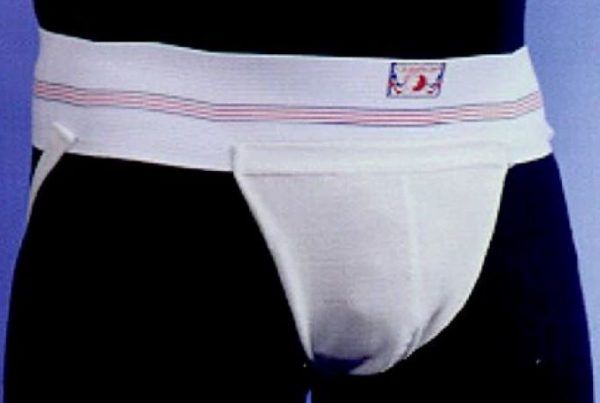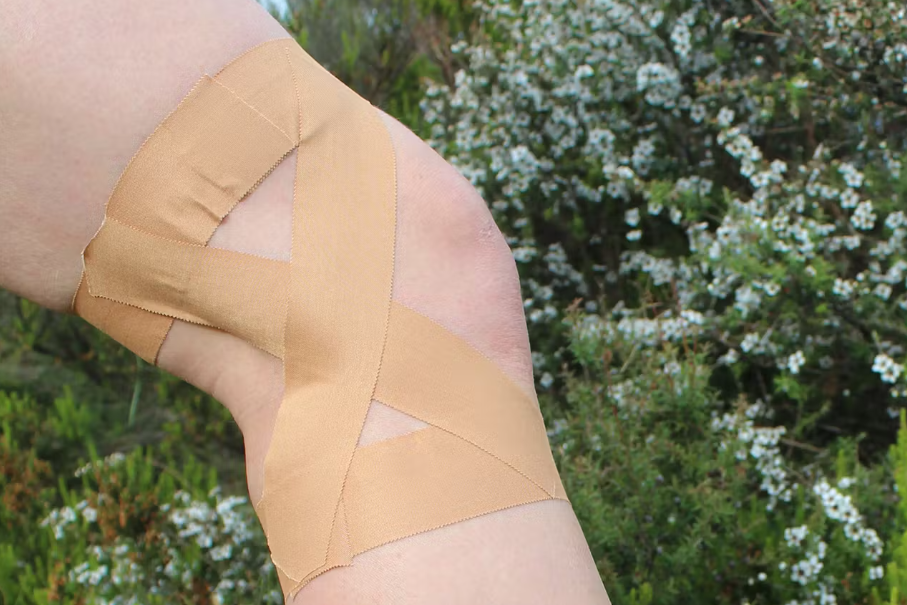
When it comes to strapping that’s known for its support, rigid tape tops the list. Its strong weave, mostly made up of rayon, can handle the toughest of training sessions. The way it lays itself on your skin will keep your joints as secure as possible.
With everything we know about this handy sports medicine tape, we can still have other questions of our own. In this article, we will tackle the dos and don’ts of using rigid tape like what is it in the first place.
What Is Rigid Tape?
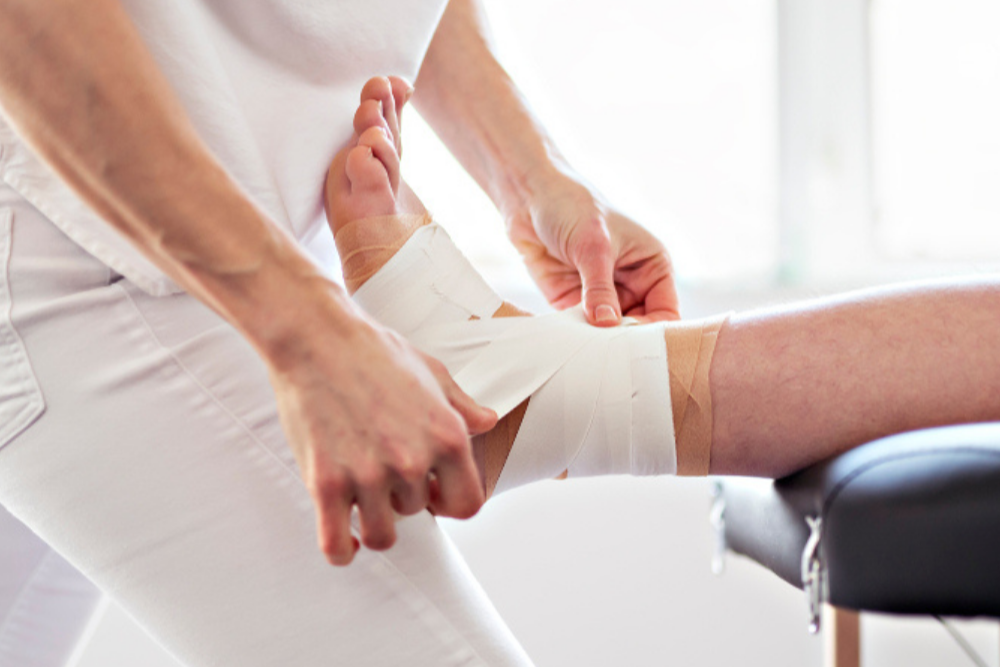
Rigid tape is a non-elastic sports strapping tape. It’s used to support an injured person’s ankles, knees, shoulders, and wrists. By limiting mobility, the tape helps muscles and joints unwind and ease discomfort.
It also helps stabilise the joints and ligaments during strenuous physical activity like for training and sports competitions. Although this tap tape is widely used for rehabilitation, it also serves as a preventative measure.
This type of sports medicine tape is often self-adhesive and usually comes in white or skin-coloured. It’s tough and non-elastic, with serrated edges for convenient tearing. These tapes come in sizes such as 50mm, 38mm, 25mm, and 12.5mm. With 38mm being the most common, the size of the tape you use will depend on where on your body you need strapping.
What Is the Difference Between Rigid Tape and Kinesiology Tape?

As tapes go for injury support, rigid and KT tape are the most utilised. Particularly in the field of sports medicine, these two have nearly identical functions. They both:
- Help inflammation
- Lessen discomfort
- Support wounded body parts
- Aid in recovery
With all of their similarities, they do differ in primarily two ways.
First of all, rigid tae hinders movement whereas kinesiology tape promotes it. Both have nearly the same purpose, but the rigid tape does it with strong backing. KT tape, on the other hand, is more flexible.
Secondly, rigid tape generally assists joints the most. Kinesiology tape mostly supports muscles.
What Should You Know Before Using Rigid Tape?
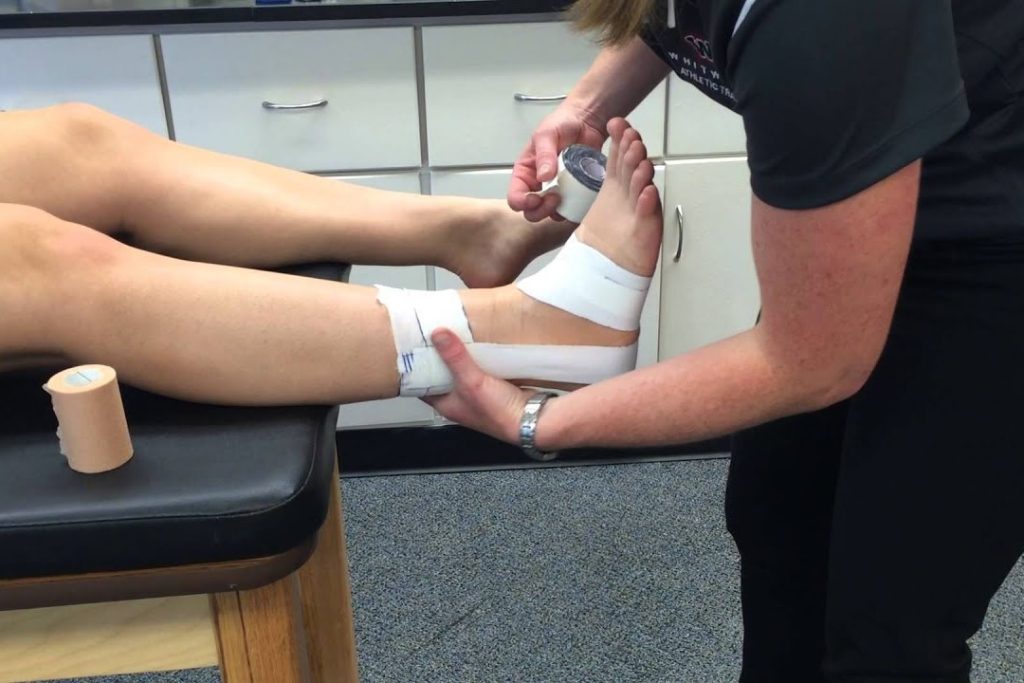
Before using rigid tape on any part of your body, you still need to know some things about it. For instance, wearing rigid tape is safe for short or even longer periods. That’s because the adhesive commonly used for this tape is zinc oxide-based, which can last up to two days. It’s still recommended to leave the tape on for only a couple of hours instead of days.
As for compatibility, not all skin types are suitable for zinc oxide glue. Start by applying small patches on your skin. Wait on how your skin reacts to the tape before the full strapping.
It’s always best to consult with a licensed physiotherapist for the best outcomes. These professionals in the medical field know how long the tape should be on your body. The length of time will depend on the injury and how long the recovery time should be.
Can You Use Rigid Tape in the Shower?
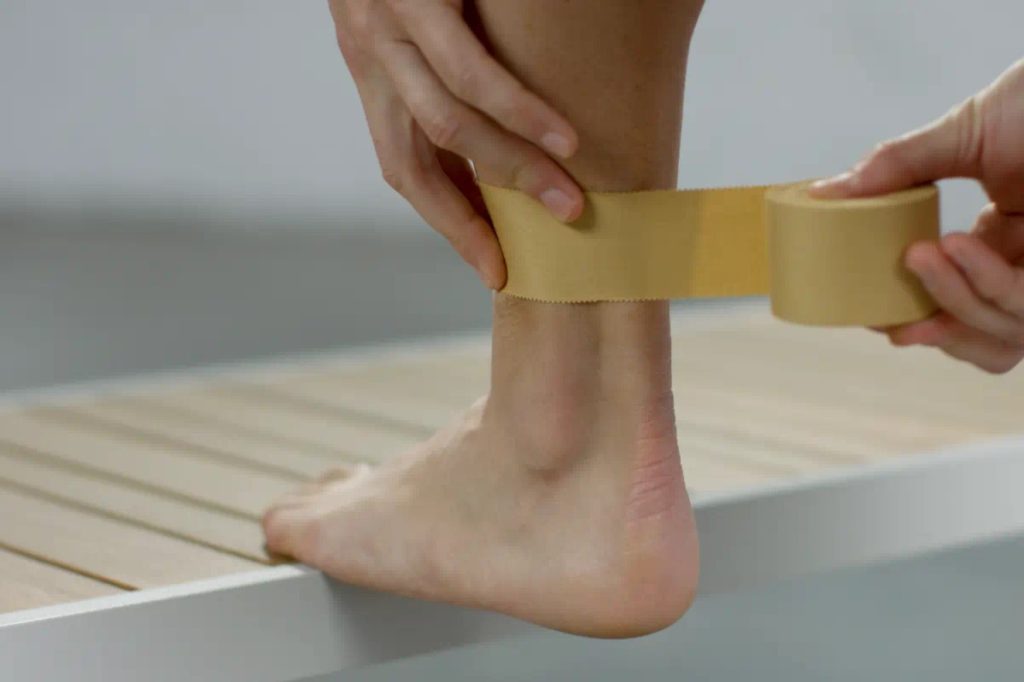
Several types of rigid sports tape are made for perspiration evaporation. It may not cause any problems while sweating, but wearing it while showering is another matter.
Getting your strapping wet is not a good idea. It may reduce the tape’s effectiveness since water causes the adhesive to wear off. Injuries should always be maintained clean and cry to facilitate healing, and for the tape to stay on.
Can You Use Rigid Tape While Sleeping?
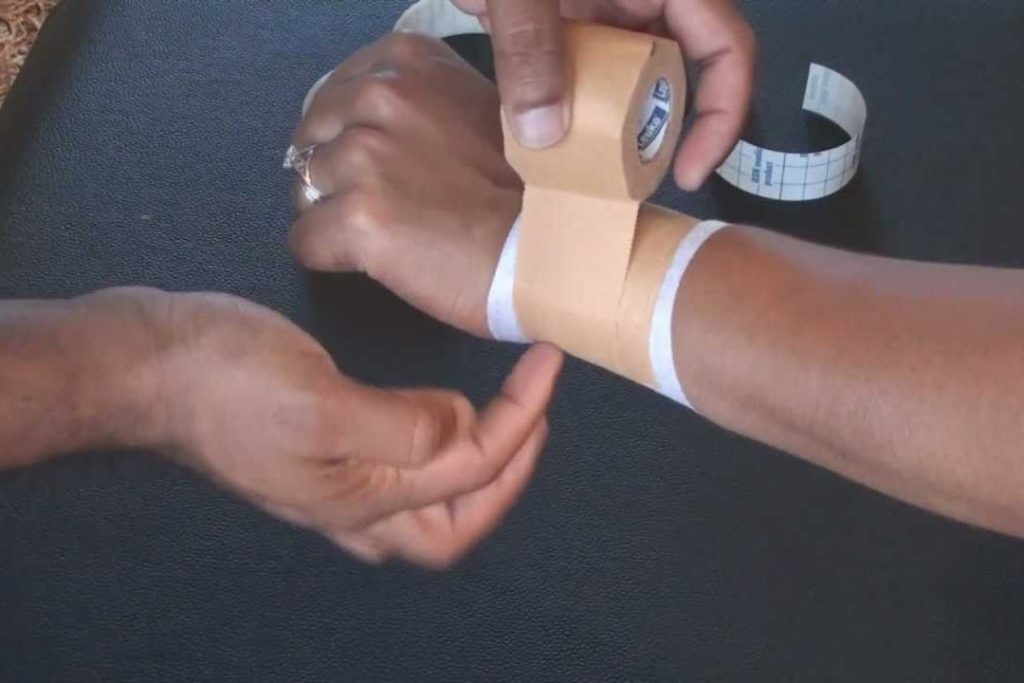
The primary function of this tape is to limit mobility. It’s stiff and not breathable. It’s supposed to stay put. As a result, you can’t sleep with this sports medicine tape still on you.
The tape’s material will make sleep uncomfortable and unpleasant. It’s hot if you wear them in bed, and you’ll sweat. Being unable to move freely will also prevent you from getting enough rest while sleeping. This indicates that sleeping with rigid tape is neither healthy nor recommended.
The Benefits of Rigid Taping
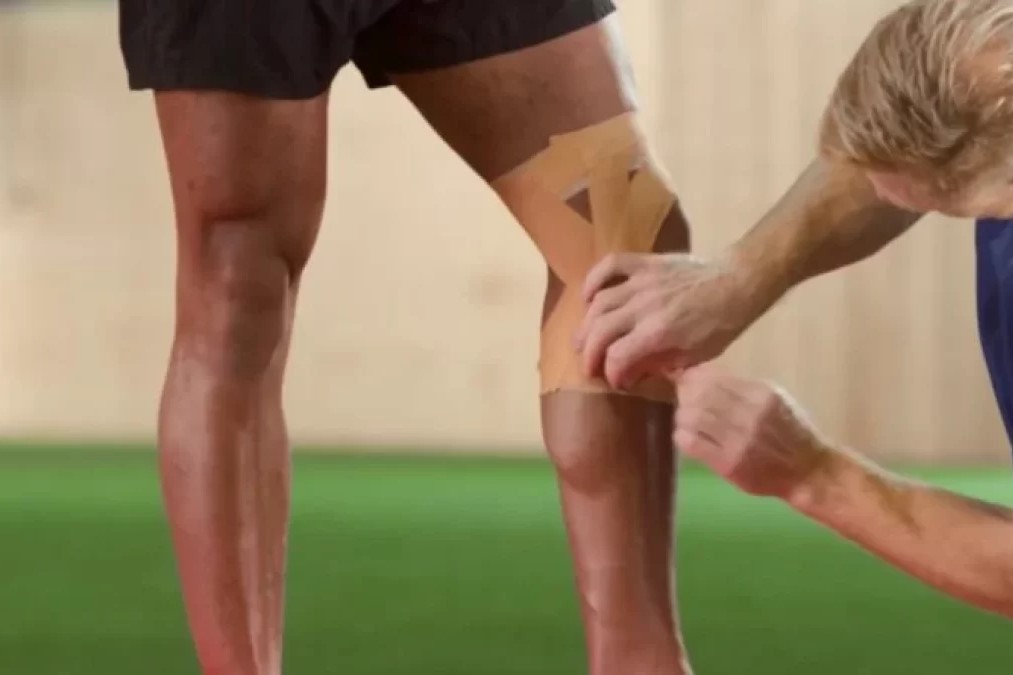
Rigid taping does more for your injuries and overall health than you might’ve initially thought. During your waking hours, and time spent outside the shower, here are all the benefits of rigid tape:
Injury Prevention and Joint Stability
One of the most significant advantages of rigid taping lies in its ability to prevent injuries and stabilise joints. The tape acts as your foundation, restricting excessive movement. Because of this, it reduces the risk of possible sprains, strains, and ligament damage.
Athletes in high-impact sports such as soccer, basketball, and rugby reap the benefits of rigid taping for this reason. It reinforces vulnerable areas like ankles, knees, and wrists, safeguarding them from sudden twists and hyperextensions.
Support for Weak or Injured Muscles
Rigid taping offers invaluable support to individuals recovering from muscle injuries and even weakness. By providing external reinforcement, the tape aids in off-loading the affected muscles, reducing strain while promoting healing.
If you have a history of muscle injuries, particularly in sports, you can benefit greatly from rigid tape. Rigid taping will allow athletes to resume training sooner and even continue playing the game they’re in.
Alleviating Pain and Discomfort
For individuals experiencing pain due to overuse or injury of a joint, rigid taping can provide much-needed relief for them. It stabilises the injured area, decreasing the pressure on the damaged tissues. This helps alleviate discomfort and pain during any physical activity.
Because of the tape, the pain relief allows athletes to maintain and improve their performance while ensuring their recovery.
Enhanced Proprioception and Body Awareness
Proprioception is your body’s ability to sense its position and movements in space. Rigid taping enhances this by providing sensory feedback to the brain. It increases a person’s awareness of their body’s alignment and mechanics.
This is especially useful for athletes. The higher proprioception leads to better control balance, and coordination during sports and physical activities. It lowers the risk of missteps and injuries.
Improved Circulation and Lymphatic Drainage
When applied correctly, rigid taping can enhance blood circulation which helps deliver essential nutrients and oxygen to tissues. Apart from that, it improves lymphatic drainage as well, cutting down swelling and inflammation. Both of these promote faster recovery in the taped area.
Also, note that this only works when the patient or athlete doesn’t experience poor blood circulation or lymphatic/venous conditions. These include diabetes and deep vein thrombosis.
Postural Support and Alignment
Any athlete worth their salt knows the postural support that rigid tape gives them during training and competition. The tape can be strategically applied to maintain the proper alignment of injuries, preventing them from being overused.
Maintaining correct posture is crucial for optimal athletic performance. With the help of proper rigid taping, it can also prevent long-term musculoskeletal issues.
Psychological Benefits and Confidence Boost
Beyond its physical advantages, rigid taping can provide some psychological benefits to athletes as well. The feeling of additional support and protection can boost their confidence, instilling a sense of security during a game.
The mental boost can positively impact performance. It allows athletes to push their limits and achieve their best results, without compromising their safety.
Who Shouldn’t Use Rigid Tape?
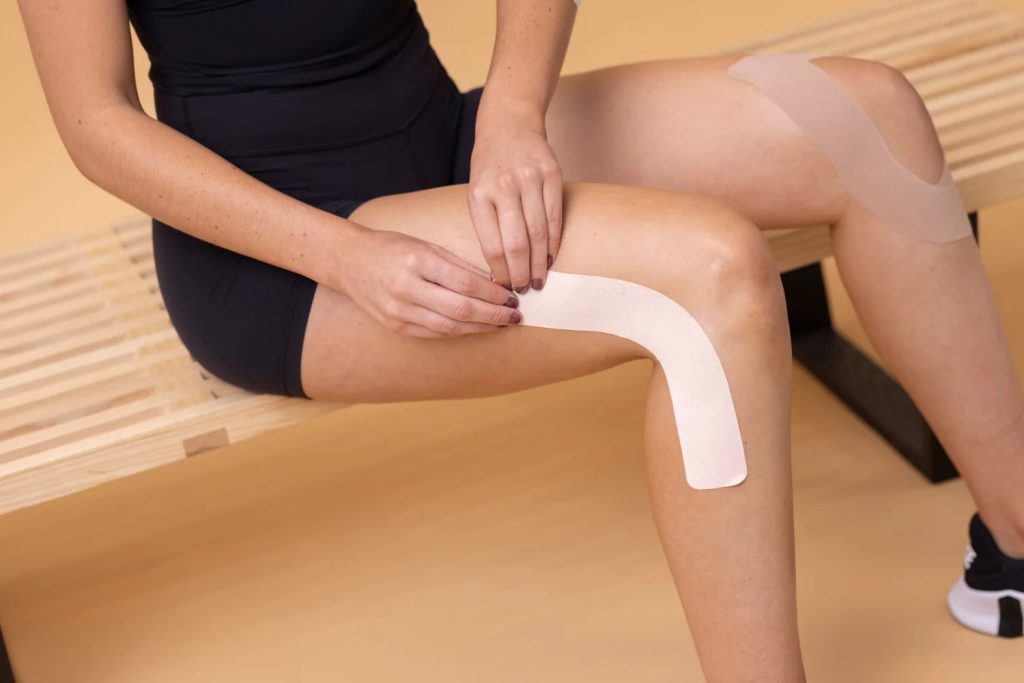
Rigid tape can improve any athlete’s game, but not everyone should try the tape. These individuals with certain exceptions should find an alternative instead. Check first with a physiotherapist before using rigid tape if you have any of the following:
Severe Allergic Reactions to the Tape
Individuals with known allergies to tape materials should steer clear of rigid tape. Some people may be sensitive to the backing or adhesive of the tape. It could lead to skin irritation or other allergic reactions.
Before applying the tape, it’s essential to check for any history of allergies. It’s also wise to consider an alternative method if an allergy is present.
Open Wounds
Rigid tape should never be applied over open wounds, cuts, or areas with active skin infections. The tape can trap bacteria and other contaminants, hindering the natural healing process and potentially leading to more severe complications.
In such cases, the priority should be treating the infection or wound. It should heal first before considering rigid taping.
Pre-existing Skin Conditions
People with pre-existing skin conditions, such as eczema, dermatitis, or psoriasis, should avoid rigid taping. The adhesive on the tape can aggravate these conditions, causing discomfort, itching, and making the skin condition worse (worsening the skin condition).
It’s crucial to ensure that the skin is healthy and free from any irritation before applying rigid tape.
Poor Blood Circulation
Rigid tape should not be applied to individuals with poor circulation, such as those with peripheral vascular disease or diabetes. The tape itself can further compromise proper blood flow to the extremities. It could potentially complicate and hinder healing.
The proper assessment of a person’s circulation is necessary before even thinking about taping.
Sensory Impairments
Exercise caution when using rigid tape on individuals with sensory impairments. These include conditions such as nerve damage and neuropathies. They may be unable to communicate any pain or discomfort they might feel caused by the tape being too tight.
If the tape is too tight, it could lead to further complications. Monitoring and frequent assessment are vital in such cases.
Immobilising Fractures or Joints
Dislocated joints and fractures need more than just rigid tape. It’s not an appropriate substitute for proper medical evaluation and immobilisation methods, like splints or casts. In these cases, immediate medical attention is critical. It’s to ensure that you’ll use the correct treatment approach.
Lymphatic or Venous Conditions
People with lymphedema, deep vein thrombosis, or other lymphatic or venous conditions shouldn’t utilise rigid tape. Like in proper blood flow, the tape might interfere with fluid circulation. The use of rigid tape could also aggravate the condition further.
If a person does have such a condition, it’s best to find an alternative solution for your taping needs.
Compromised Sensation/s
Using rigid tape while having ailments such as nerve damage or other neuropathies is a big no-no. People with these conditions might not feel anything in specific areas, masking any discomfort or pain with the tape on.
Healthcare professionals must apply the tape carefully and evaluate these individuals regularly.
Tips for Applying Rigid Taping
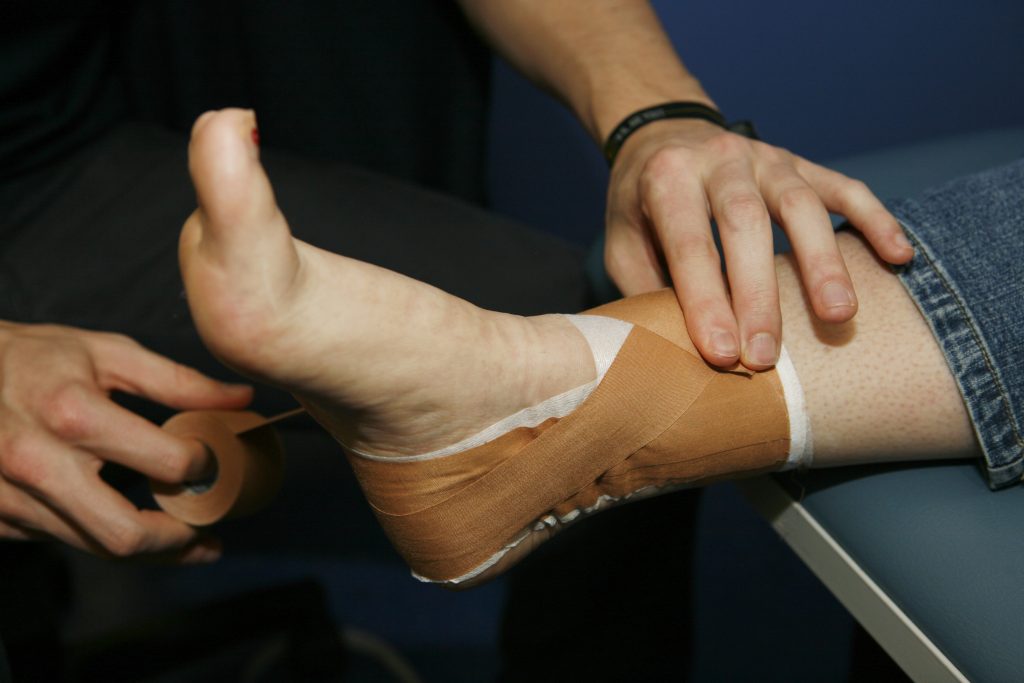
There are different techniques for applying rigid tape. It depends on the location of the injury or even the sport. Below is a list of general rules you need to follow before, during, and after rigid taping:
Preparing Your Skin
- Shave the area of your skin where you want to put the sports tape, if possible. You’ll get better results if you shave with a conventional or electric razor. It should be done at least 12 hours before applying the tape.
- Carefully clean the area with a dry towel to clear the excess oil on your skin. That will guarantee that the tape remains in place while it’s on.
- Protect any scrapes or damaged skin with bandages.
- Wear underwrap to shield the skin from any rash or even just discomfort.
Applying the Tape
- Put the athletic tape on joints in the rest position for optimal results.
- When winding the tape over your muscles, don’t flex them too much. Doing so will lose the tape’s grip.
- Apply the tape in a single direction so that it may glide smoothly across your skin.
- Overlap the tape slightly on itself. This technique will make the tape grip better.
Checking the Strapping
- Flex your muscles slightly to indicate how tight the tape should be. If it’s placed too loosely, it won’t be able to protect the limbs and joints in the correct position.
- Remove the strapping tape and reapply with less tension if the skin becomes numb or tingly. It shouldn’t be too tight since this will slow down blood circulation.
- Try to use minimum tape when taping. Too much tape can create muscular immobility, but use enough. Remember that the amount of tape necessary is still determined by the amount of support you need.
Removing the Tape When Done
- Take the tape out immediately after you finish your training or game for the day. Strapping with rigid tape should not be used for more than a few hours at a time.
- Snip off the tape with scissors. It’ll make removing the tape easier. Be careful when using tape scissors that are close to the skin.
- Carefully pull the tape away from the skin once you’ve cut it apart. To gently remove the tape without leaving any marks behind, use some tape remover, oil, alcohol, or body lotion.
In Conclusion
Rigid tape has become an indispensable and invaluable assistance in sports and rehabilitation. The tape’s multiple advantages and continuous usage in sports medicine further confirm its value to professionals like athletes. These people want to improve their performance and attain their goals safely and effectively. They can, all thanks to rigid taping.
These athletes can confidently achieve their goals and triumph in their chosen profession with rigid taping as their dependable ally. Ultimately, the use of rigid tape is a clear plus. It’s for the people who want to balance optimal performance with the need for safety, security, and comfort.
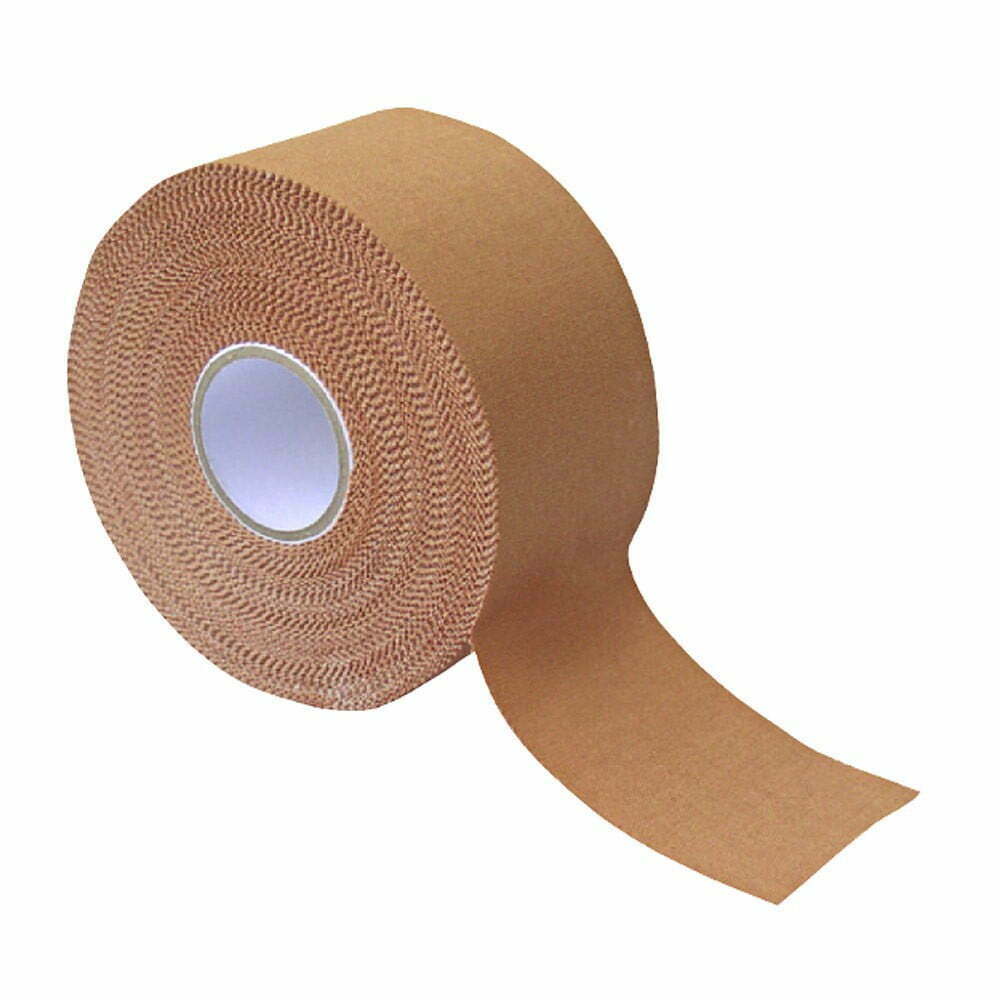
Rigid Tape
Rigid tape is used to provide joint stability in case of ligament tears, muscle sprains and inflammation. It’s used to provide ankle support in a variety of active mobility sports like Rugby, Cricket, Football and more. Sized at 1.5″ (3.7 cms) wide X 15 yards (around 13.7 meters) in length.
Available for delivery across UAE with next day delivery in the majority of cases.
Each box contains 32 units.



